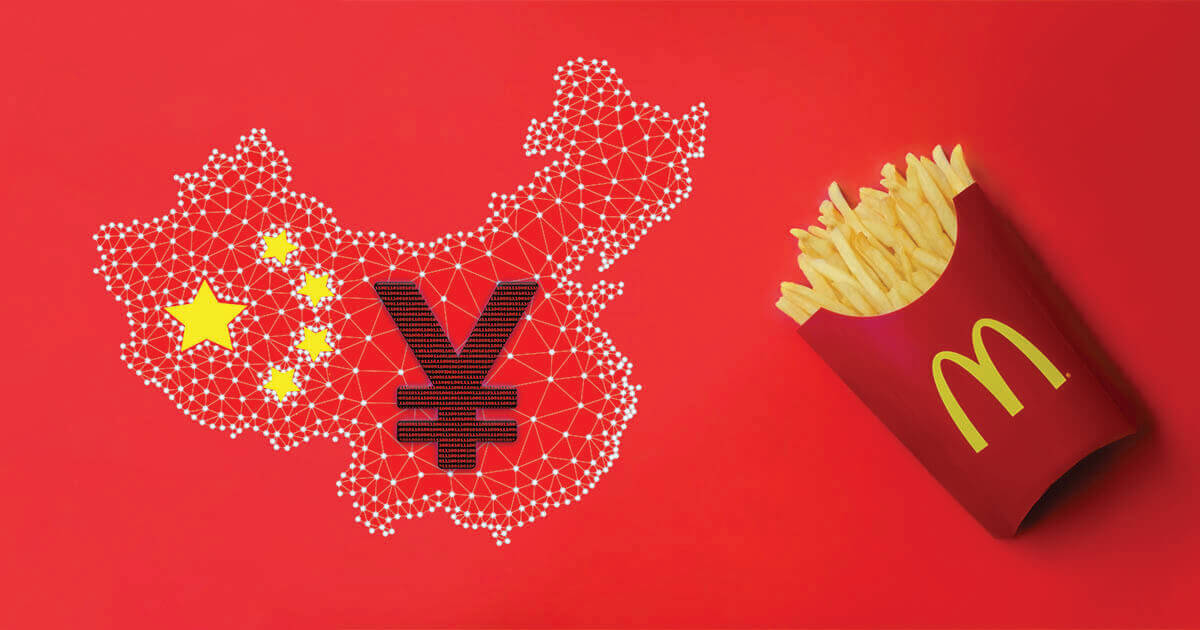McDonald's, Subway and Starbucks Among the First to Trial China's Digital Yuan
Lucas Cacioli Apr 24, 2020 01:45
Mcdonalds has been named along with coffee giant Starbucks as one of the 19 restaurants that will be first to try out China’s Digital Yuan in the new district of Xiong’An.

Mcdonalds has been named along with coffee giant Starbucks as one of the 19 retail firms and restaurants that will be first to try out China’s Digital Yuan in the new district of Xiong’An.

On April 22, the Reformation and Development Commission of the Xiong,An district convened to discuss the pilot for China’s Digitial Currency Electronic Payment (DCEP) according to the South China Morning Post.
China has been unswerving in their race for central bank digital currency dominance even in the wake of the COVID-19 disruption which has perhaps also added fuel to the necessity to have a cashless system free of germ filled notes.
The pilot is the next step in China’s DCEP plan and the PBoC and state-owned commercial banks have already begun developing digital wallet applications and designing the digital Yuan.
The report does not give an exact time length to the testing period but noted that the meeting involved representatives from all four of China’s state-owned banks, Tencent, Ant Financial and Huawei. 19 restaraunts will also participate which will include Mcdonalds, Starbucks and Subway.
The official test application also shows that the DCEP test is being rolled out in the cities of Chengdu, Suzhou, Shenzhen.
As reported by Blockchain.News, local government employees in the city of Suzhou will be receiving China’s central bank digital currency, digital currency electronic payment (DCEP) pilot test in May.
The DCEP Top-Level Design
So how will China create its digital currency? First of all, we know that the digital currency will not be running on a blockchain. After a review of the 50 patent applications submitted by the PBoC, it will be powered by a two-tier operating system and will not be fully decentralized.
According to Binance, the central bank DCEP will be backed 1:1 by Renminbi fiat, following a two-tiered structured system involving the central bank, commercial banks, and the retail market. The first layer consists of the PBoC issuing and redeeming China’s digital Yuan via commercial banks. The second layer is responsible for connecting the commercial banks with the retail market. The plan is to replace notes and coins in circulation.
Image source: Shutterstock.jpg)

